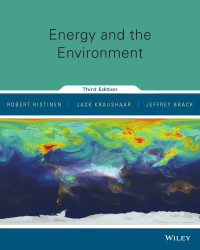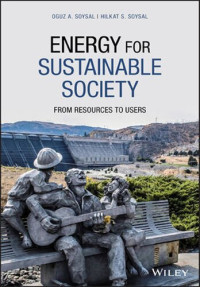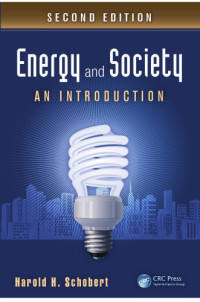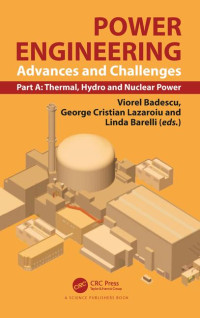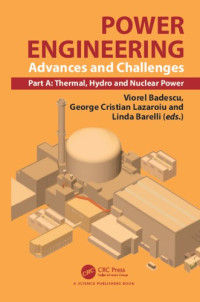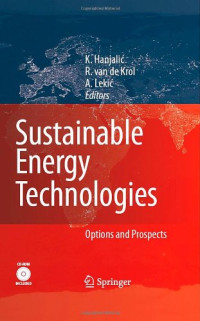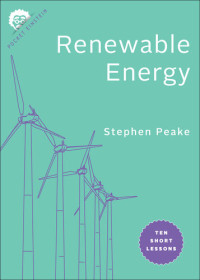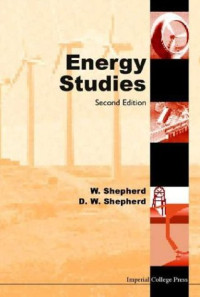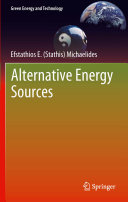
Energy, the Environment, and Sustainability
Michaelides, Efstathios E3.2.3 Lead Abatement -- 3.2.4 Ozone Depletion: The "Ozone Hole" -- 3.3 Global Climate Change -- 3.3.1 Greenhouse Effect -- 3.3.2 Greenhouse Gas Emissions -- 3.3.3 Weather and Climate -- 3.3.4 Potential GCC Effects on the Climate -- 3.3.5 Mitigating and Remedial Actions -- 3.3.6 The Kyoto Protocol -- 3.3.7 The Paris Agreement -- 3.3.8 The Kigali Agreement on Hydrofluorocarbons -- 3.3.9 Uniqueness of the GCC Problem -- 3.3.10 Myths and Reality Related to GCC -- 3.4 Nuclear Waste -- 3.4.1 Initial Treatment of the Waste -- 3.4.2 Long-Term Disposal -- 3.5 Thermal Pollution -- 3.5.1 Energy-Water Nexus -- 3.5.2 Effects on the Aquatic Life -- 3.5.3 Myths and Reality Related to Water Use -- 3.6 Energy Sustainability and Carbon Footprint -- References -- Chapter 4: Fossil Fuels -- 4.1 Heating Value of Fuels -- 4.2 Types of Fossil Fuels -- 4.2.1 Coal -- 4.2.2 Petroleum (Crude Oil) -- 4.2.3 Natural Gas -- 4.2.4 Oil Shale and Shale Gas -- 4.2.5 Tar Sands -- 4.3 Physicochemical Fuel Conversions -- 4.3.1 Petroleum Refining -- 4.3.2 Coal Liquefaction and Gasification: Synfuels -- 4.3.3 Fluidized Bed Reactors -- 4.4 Fossil Fuel Resources and Reserves: Peak Oil -- 4.4.1 Hubbert Curve -- 4.4.2 Life Cycle of Fossil Fuels: New Models for the Depletion of a Resource -- 4.5 Environmental Effects -- 4.5.1 Coal Mining and Strip Mining -- 4.5.2 Oil Transport and Spills -- 4.5.3 Hydraulic Fracturing (Fracking) -- 4.6 Future of Fossil Fuel Consumption -- 4.7 CO2 Avoidance -- References -- Chapter 5: Nuclear Energy -- 5.1 Elements of Nuclear Physics -- 5.1.1 Nuclear Fission -- 5.1.2 Nuclear Fusion -- 5.1.3 Radioactivity -- 5.1.4 Chain Reaction -- 5.2 Essential Components of Nuclear Reactors -- 5.3 Reactor and Power Plant Classifications -- 5.3.1 Pressurized Water Reactors and Boiling Water Reactors -- 5.3.2 Gas-Cooled Reactors -- 5.3.3 Other Thermal Reactor Types
5.3.4 Breeder Reactors -- 5.4 Useful Parameters for Nuclear Energy -- 5.5 Notorious Nuclear Power Plant Accidents -- 5.5.1 Accident at Three Mile Island -- 5.5.2 Accident at Chernobyl -- 5.5.3 Accident at Fukushima Dai-ichi -- 5.6 Environmental Effects: The Nuclear Fuel Cycle -- 5.6.1 Mining, Refining, and Enrichment -- 5.6.2 Reprocessing of Spent Fuel -- Temporary and Permanent Storages -- 5.6.3 Environmental and Health Effects of the Fuel Cycle -- 5.7 Economics of Nuclear Energy -- 5.8 Future of Nuclear Energy -- 5.8.1 To Breed or Not to Breed? -- 5.9 Myths and Reality about Nuclear Energy -- References -- Chapter 6: Renewable Energy -- 6.1 Hydroelectric Energy -- 6.1.1 Global Hydroelectric Energy Production -- 6.1.2 Environmental Impacts and Safety Concerns -- 6.1.3 Planned Hydroelectric Installations and Future Expansion -- 6.2 Solar Energy -- 6.2.1 Variability of Solar Radiation -- 6.2.2 Thermal Collectors -- 6.2.3 Thermal Solar Power Plants -- 6.2.4 Solar Cells and Photovoltaics -- 6.2.5 Solar Power Data and Solar Energy Calculations -- 6.2.6 Environmental Impacts of Solar Energy -- 6.3 Wind Energy -- 6.3.1 Fundamentals of Wind Power -- 6.3.2 Wind Turbines -- 6.3.3 Wind Power Generation -- 6.3.4 Average Power and Annual Energy Production -- 6.3.5 Wind Farms -- 6.3.6 Environmental Impacts of Wind Energy -- 6.4 Geothermal Energy -- 6.4.1 Fundamentals of Geothermal Energy -- 6.4.2 Geothermal Resources -- 6.4.3 Electric Power Production -- 6.4.3.1 Dry Steam Units -- 6.4.3.2 Single- and Dual-Flashing Units -- 6.4.3.3 Binary Units -- 6.4.3.4 Hybrid Geothermal-Fossil Power Units -- 6.4.4 District Heating -- 6.4.5 Environmental Impacts of Geothermal Energy -- 6.5 Biomass Energy -- 6.5.1 Heating Value of Biomass -- 6.5.2 Biofuels: Ethanol Production from Corn -- 6.5.3 Aquatic Biomass -- 6.5.4 Environmental and Ecological Impacts of Biomass Use
6.5.5 Social, Economic, and Other Issues Related to Biomass -- 6.5.5.1 Food Production and Food Prices -- 6.5.5.2 Food Scarcity -- 6.5.5.3 Economic Subsidies -- 6.5.5.4 Global Poverty Levels -- 6.5.5.5 Stability of Energy Prices -- 6.5.5.6 GHG Policies and Regulations -- 6.5.5.7 Technological Advances -- 6.5.5.8 Global and Regional Climate Change -- 6.6 Sea/Ocean Energy -- 6.6.1 Ocean Currents -- 6.6.2 Wave Energy -- 6.6.3 Tidal Energy -- 6.6.4 Ocean-Freshwater Salinity Gradient -- 6.6.5 Ocean-Thermal Energy Conversion -- 6.7 Myths and Reality about Renewable Energy -- References -- Chapter 7: Energy Storage -- 7.1 Demand for Electricity: The Need to Store Energy -- 7.1.1 Electricity Supply by Types of Power Plants -- 7.1.2 Wholesale Electricity Prices: Deregulation -- 7.1.3 Energy Storage Applications and Figures of Merit -- 7.2 Electromechanical Storage -- 7.2.1 Pumped Water -- 7.2.2 Compressed Air -- 7.2.3 Flywheels, Springs, and Torsion Bars -- 7.2.4 Capacitors, Ultracapacitors, and Superconducting Coils -- 7.3 Thermal Storage -- 7.3.1 Sensible and Latent Heat Storage -- 7.3.2 Storage of "Coolness" -- 7.3.3 Phase-Change Materials: Eutectic Salts -- 7.4 Chemical Storage: Batteries -- 7.4.1 Wet and Dry Cell Batteries -- 7.4.2 Lead Batteries -- 7.4.3 Lithium Batteries -- 7.4.4 Advantages and Disadvantages of Batteries -- 7.5 Hydrogen Storage -- 7.5.1 Fuel Cells -- 7.5.2 Practical Types of Fuel Cells -- 7.5.3 Hydrogen Economy -- 7.5.4 Case Study of Hydrogen Energy Storage for Buildings -- 7.6 Characteristics, Timescales, and Cost of Energy Storage -- 7.7 Myths and Reality on Energy Storage -- References -- Chapter 8: Energy Conservation and Higher Efficiency -- 8.1 Desired Actions, Energy Consumption, Conservation, and Higher Efficiency -- 8.2 Use of the Exergy Concept to Reduce Energy Resource Consumption
8.2.1 Utilization of Fossil Fuel Resources -- 8.2.2 Minimization of Energy or Power Used for Desired Actions -- 8.3 Improved Efficiency in Electric Power Generation -- 8.3.1 For Rankine Vapor Cycles -- 8.3.2 For Brayton Gas Cycles -- 8.3.3 Combination of Processes and Desired Actions: Cogeneration -- 8.4 Waste Heat Utilization -- 8.4.1 From Rankine (Steam) Cycles -- 8.4.2 From Brayton (Gas) Cycles: Combined Cycles -- 8.5 Conservation and Efficiency Improvement in Buildings -- 8.5.1 Use of Fluorescent Bulbs or Light-Emitting Diodes -- 8.5.2 Use of Heat Pump Cycles for Heating and Cooling -- 8.5.3 Ground Source Heat Pumps -- 8.5.4 Hot Water Supply -- 8.5.5 Adiabatic Evaporation -- 8.5.6 District Cooling -- 8.5.7 Fenestration (Windows) Improvement -- 8.5.8 Improved Efficiency of Appliances -- 8.5.9 Other Energy Conservation Measures for Buildings -- 8.6 Conservation and Improved Efficiency in Transportation -- 8.6.1 Electric Vehicles with Batteries -- 8.6.2 Fuel Cell-Powered Vehicles -- 8.7 Myths and Reality on Conservation and Efficiency -- References -- Chapter 9: Energy Economics and Decision-Making Methods -- 9.1 Introduction -- 9.1.1 Fundamental Concepts of Economics -- 9.2 Time-Value of Money -- 9.2.1 Simple and Compound Interests -- 9.2.2 Cash Flow -- 9.2.3 Equivalence of Funds and Present Value -- 9.2.4 Note on the Discount Rate and Interest Rates -- 9.3 Decision-Making Process -- 9.3.1 Developing a List of Alternatives -- 9.3.2 Externalities -- 9.4 Investment Appraisal Methods -- 9.4.1 Net Present Value -- 9.4.2 Annual Worth Method -- 9.4.3 Average Return on Book -- 9.4.4 Payback Period -- 9.4.5 Internal Rate of Return -- 9.4.6 External Rate of Return -- 9.4.7 Profitability Index -- 9.5 Case Studies: Financial Analysis of a Wind Farm Project -- 9.5.1 NPV and Governmental Incentives or Disincentives
9.5.2 Use of the NPV Method for Improved Efficiency Projects
Abstract: "A CRC title, part of the Taylor & Francis imprint, a member of the Taylor & Francis Group, the academic division of T&F Informa plc."
 Amazon
Amazon  Barnes & Noble
Barnes & Noble  Bookshop.org
Bookshop.org  फ़ाइल कन्वर्टर
फ़ाइल कन्वर्टर अधिक खोज परिणाम
अधिक खोज परिणाम अधिक लाभ
अधिक लाभ 
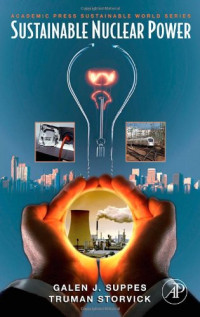
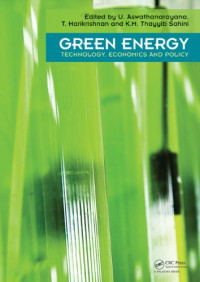
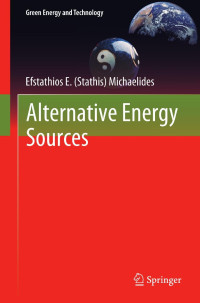




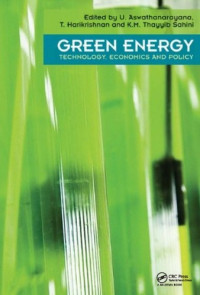
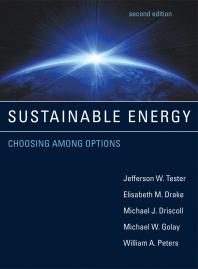
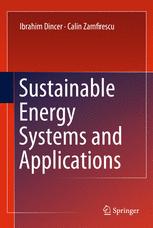



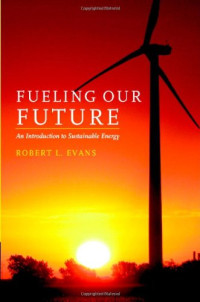
![Neil Schlager, Jayne Weisblatt — Alternative Energy [3 Vols]](https://s3proxy.cdn-zlib.se/covers200/collections/genesis/a68b5093b2d395ae4225b4183317369186cfa1ea3cd422aed7d982681b36eb76.jpg)


